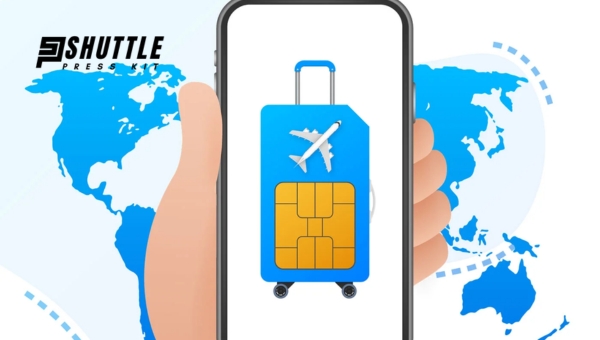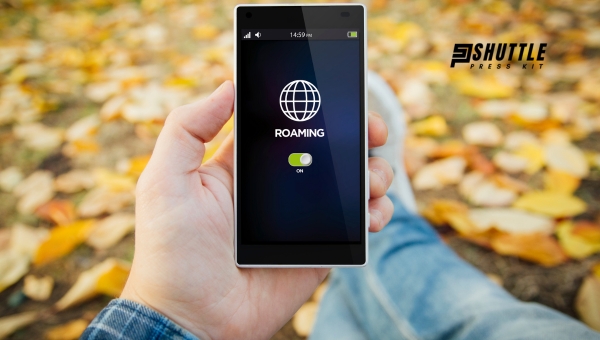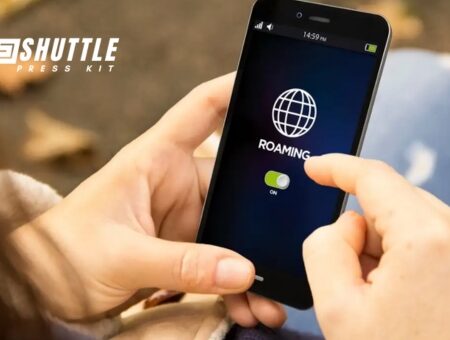Have you ever wondered what happens to your phone when you travel? Suddenly, you can still access the internet, send emails, and post to social media—but how? That’s where “Data Roaming” comes into play. Imagine it as a magic key that unlocks the door to the world of internet whenever you’re away from home.
When I talk about data roaming, I’m simply referring to using your mobile phone outside of its usual service area. Basically, when you’re not in range of your operator’s network towers and your phone hooks up with another network so you can keep using the internet, checking your Facebook, or making that important Skype call—all without needing Wi-Fi. This service keeps you connected almost anywhere in the world!
What is Data Roaming?
Data roaming refers to the process of using your mobile device to access data services such as internet browsing, email, and app usage outside of your service provider’s primary network coverage.

This happens when you travel beyond the geographic boundaries where your carrier operates directly. To facilitate this, mobile service providers establish agreements with networks in other areas, enabling users to stay connected even when they’re off their “home” network—albeit often at higher costs due to roaming charges.
When you enable data roaming on a smartphone or tablet, you can maintain access to data-driven features without interruption during travel. However, since it involves connecting through networks that are not owned by your original service provider, additional fees might apply depending on your provider’s plans and the countries visited.
It’s crucial for users to check their mobile plan details or contact their carriers before traveling abroad to manage expenses and avoid unexpected bills for data usage while roaming.
Also Read: Starlink vs HughesNet: Which Wins the Satellite Battle?
Situations Requiring Data Roaming
Data roaming is a vital service that allows your mobile device to access cellular data services when you’re outside your provider’s coverage area, ensuring connectivity almost anywhere in the world. This feature is crucial for maintaining internet access while traveling. Here are the key instances when you would typically need to activate data roaming:

- International Travel: When visiting a country that’s outside of your mobile network provider’s service territory, activating data roaming allows you to keep using your mobile data for navigation, online searches, and staying connected with friends and family.
- Cruise Ships or Remote Locations: If you’re traveling on a cruise or in remote areas where your regular service provider has no coverage, turning on data roaming can help you stay connected via local networks.
- Border Areas: Living in or visiting areas near country borders might result in weak signals from your domestic network provider. Activating data roaming ensures seamless connectivity by latching onto networks from across the border if they offer stronger signals.
Remember to check the rates and terms of data roaming with your service provider before traveling to avoid unexpected charges. Many carriers offer international packages or temporary plans to make this option more affordable.
Also Read: Starlink Volcano Mount Guide: Easy DIY Installation Tips
Strategies to Minimize Data Roaming Expenses
When traveling abroad, staying connected is essential, but it often comes with the risk of incurring expensive data roaming charges. These fees can escalate quickly, leading to an unpleasant surprise upon returning home. To efficiently manage and reduce these costs, here are practical steps you can follow:

- Pre-travel Plan Assessment: Before your trip, contact your mobile service provider to explore any international plans or packages they offer that could cover your travel destination at a flat rate or for an additional but manageable fee.
- Data Roaming Toggle: Make use of the ability of your device to turn data roaming on and off. Keep it disabled for most parts of your journey to prevent unnecessary charges and only activate it when you need to access online services.
- Disable Automatic Updates: Configure apps on your device so they only update over Wi-Fi connections. This prevents background data usage from adding up in cost due to roaming.
- Leverage Offline Maps: Download maps for offline use before leaving or while connected to Wi-Fi during your travels. This ensures you have navigation assistance without needing live data.
- Be Cautious with Media Streaming: Streaming music and videos consume significant amounts of data. Avoid this as much as possible unless connected to Wi-Fi.
- Regular Data Usage Check: Keep track of how much data you’re using throughout the trip by regularly checking in on your device’s usage metrics or any tracking tools offered by your carrier.
By implementing these strategies, travelers can maintain connectivity without facing excessive roaming fees, ensuring a more enjoyable and economical trip abroad.
Also Read: How to Factory Reset Your Starlink Router? – Detailed Guide
Pros and Cons of Data Roaming
Data roaming allows mobile users to access data services when they are outside their home network’s coverage area, including international travel. While it offers the convenience of staying connected anywhere, it also comes with certain downsides that users should be aware of.

| Pros | Cons |
|---|---|
| Uninterrupted access to data services | High charges for mobile data usage |
| Convenience of using apps, email, and messaging anywhere | Unexpected fees for exceeding data limits |
| Offers a solution for those without local SIM cards | Extra costs for texts, calls, and per MB usage |
| Eliminates the need to find Wi-Fi hotspots | Risk of malware or phishing attacks on unknown networks |
| Seamless transition between networks during travel | Need to monitor app updates and background activity to avoid unwanted usage |
Alternatives to Data Roaming for Travelers
Traveling internationally often brings the concern of incurring hefty data roaming charges. However, there are convenient alternatives that allow you to stay connected without breaking the bank. Here’s a guide to bypassing traditional data roaming by leveraging accessible options:

- Utilize Wi-Fi Hotspots:
- Seek out free or paid Wi-Fi services available in public places such as cafes, hotels, and airports.
- Ensure your device connects securely to avoid potential cybersecurity threats.
- Purchase Local SIM Cards:
- Buy a SIM card from local providers in your destination country for cost-effective talk, text, and data services.
- Ensure your phone is unlocked before departure and prepare necessary identification for purchase.
- Opt for International SIM Cards or eSIMs:
- Consider getting an international SIM card that provides coverage across multiple countries if your travels are extensive.
- For devices supporting eSIM technology, activate international plans digitally for seamless service upon arrival.
- Carry a Portable Hotspot Device:
- Invest in or rent a mobile hotspot device if you require connection across multiple devices without relying on public Wi-Fi networks.
By adopting these strategies, you can maintain connectivity during your travels without the stress of excessive roaming fees.
Also Read: How Long Does Starlink Take to Boot Up? Fast Boot Times Revealed
Frequently Asked Questions
What is data roaming?
Data roaming refers to the use of your mobile device’s internet connection while you are in a different country from your provider’s network, often leading to additional charges.
How can I avoid high charges while data roaming?
To avoid high charges, turn off data roaming in your device’s settings, use Wi-Fi whenever possible, or purchase a local or international data plan.
Does data roaming affect call and text messages?
Yes, data roaming can affect the cost of call and text messages, which may be higher than your local rates, depending on your mobile plan and provider.
Can I use data roaming for free?
Some mobile providers offer plans with free data roaming or have agreements with providers in other countries, but it’s essential to check with your provider before traveling.
Conclusion
Data roaming refers to the ability for a cellular customer to automatically send and receive data while traveling outside the geographical coverage area of their network provider. When roaming, a device communicates using a network that belongs to another operator.
While this feature is incredibly convenient for staying connected anywhere in the world, it often comes with higher costs due to the agreements between different network operators.
